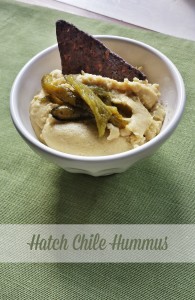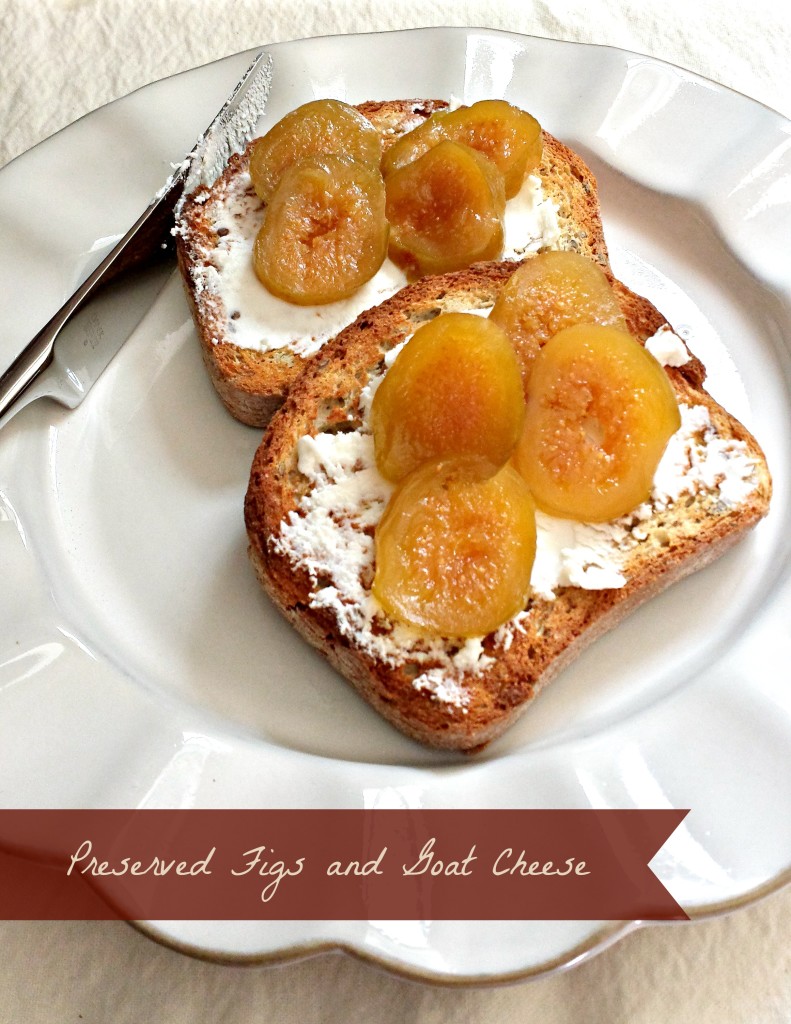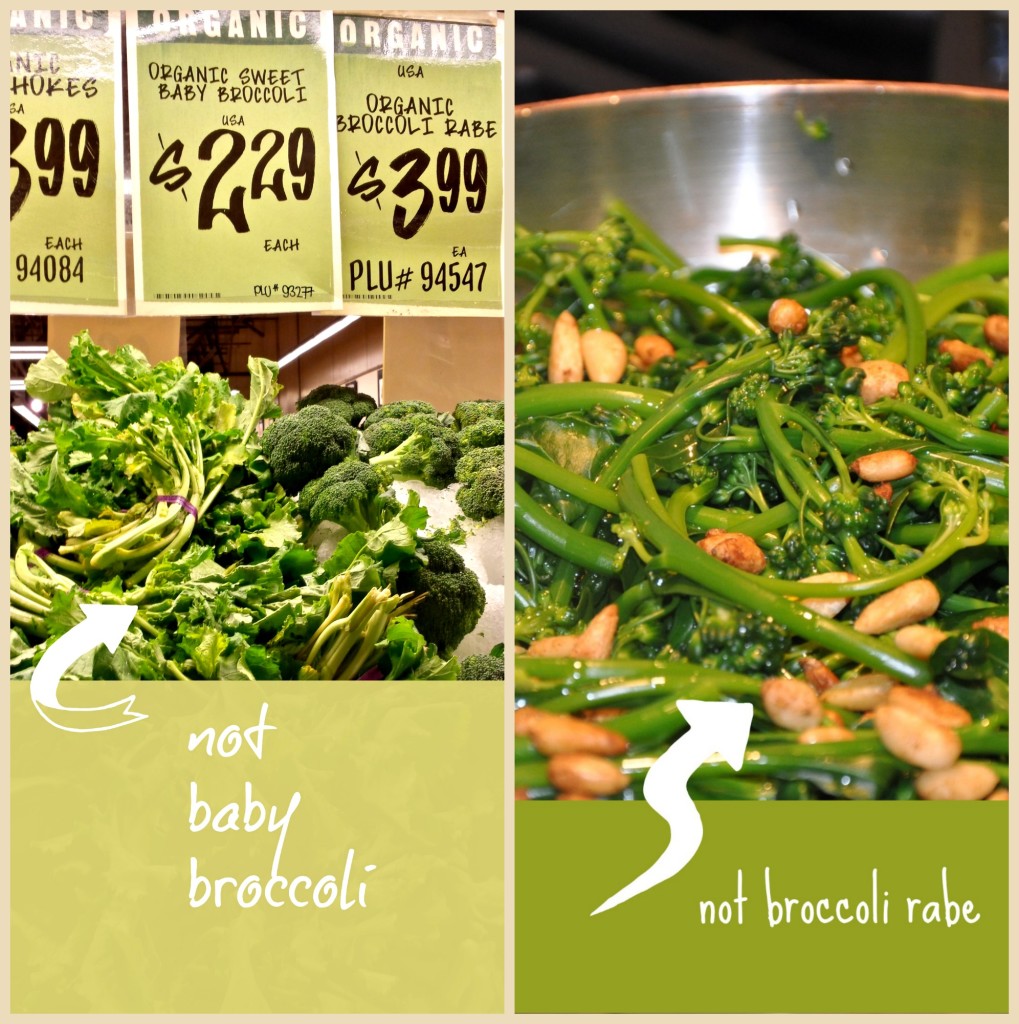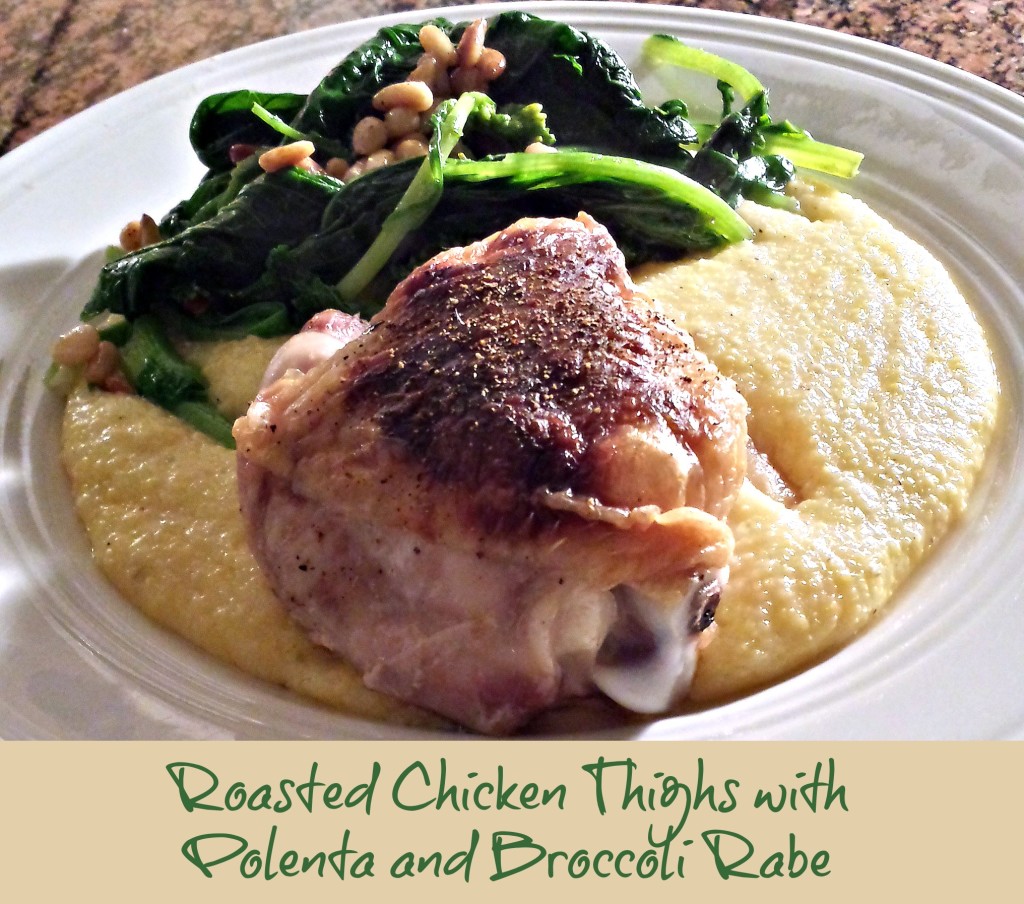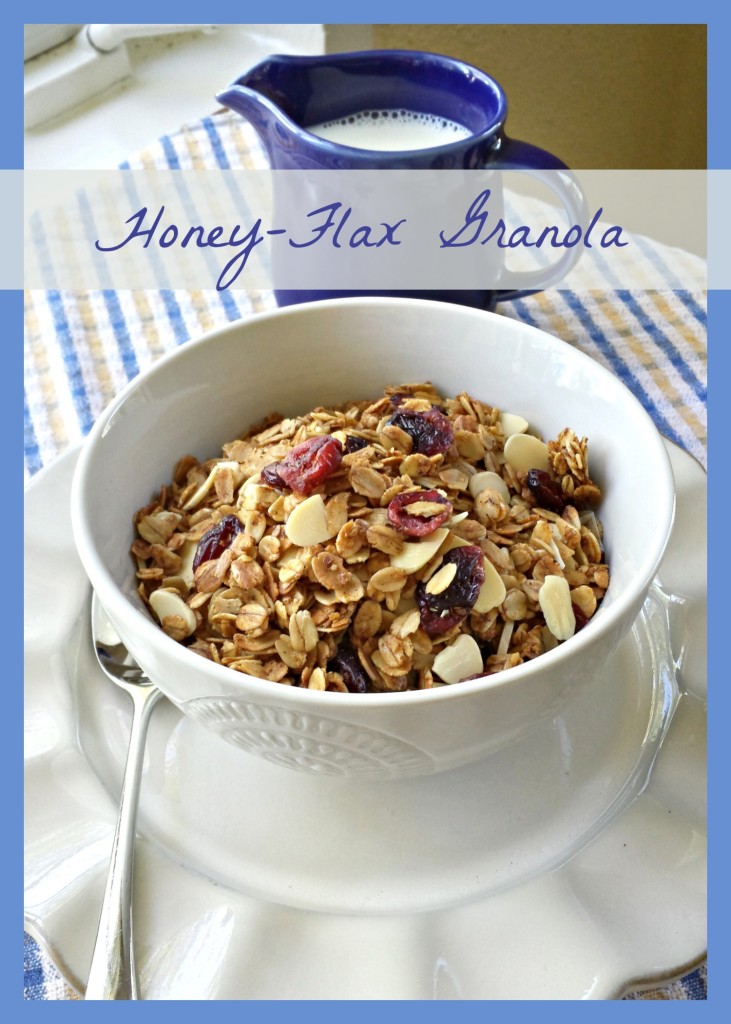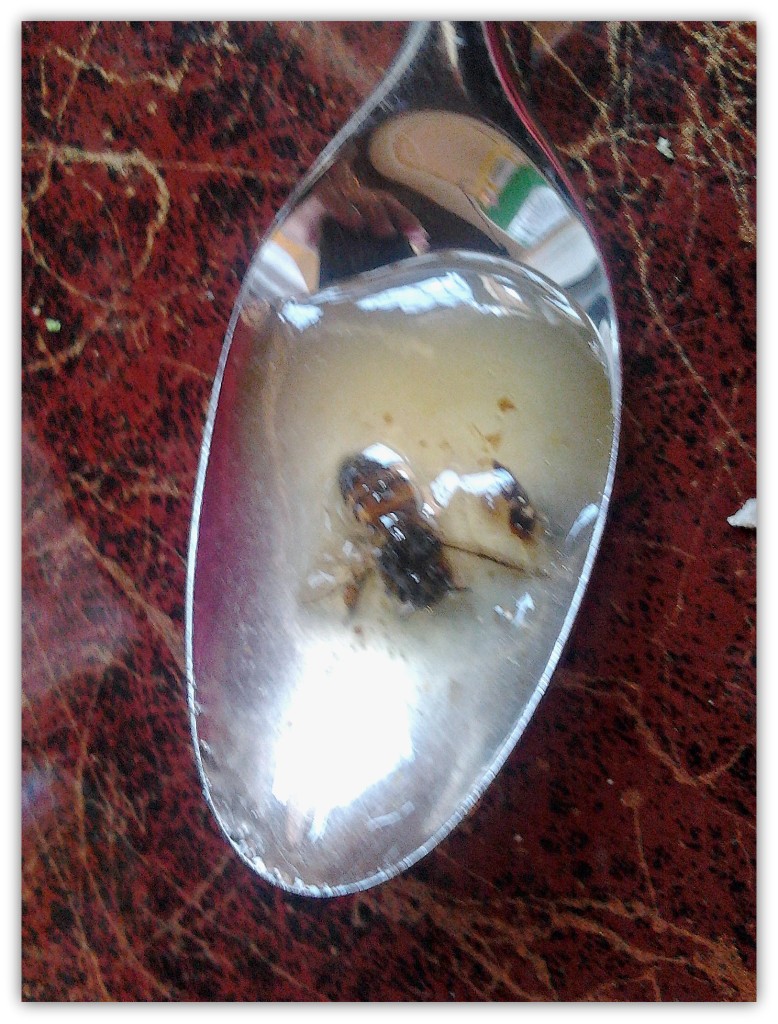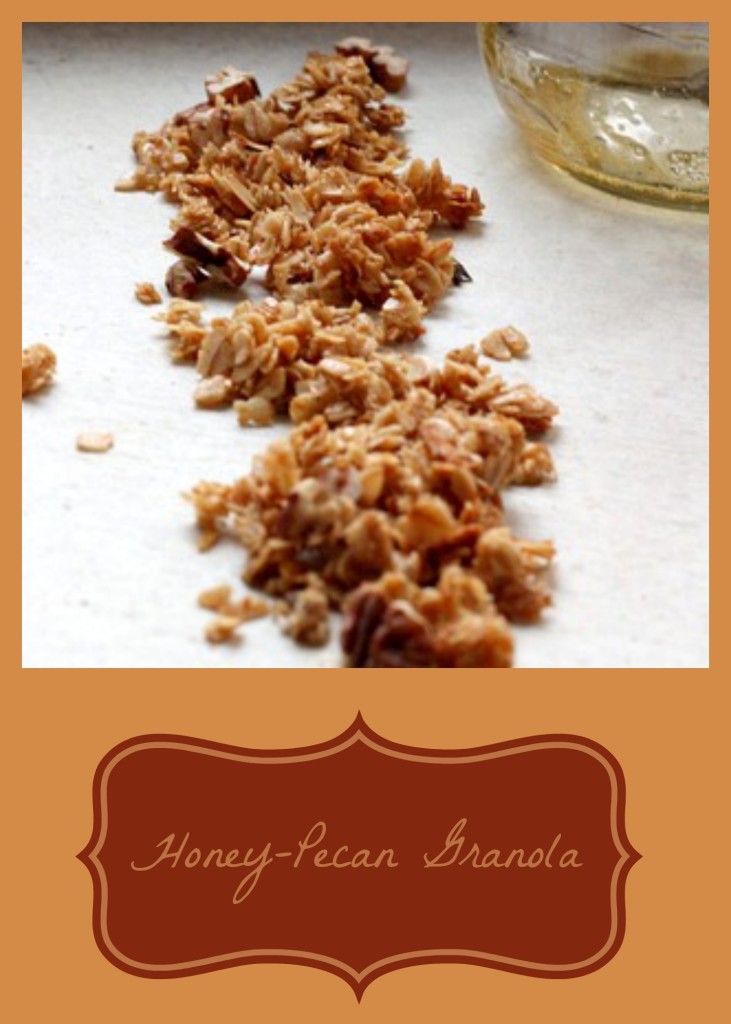So why have I decided to embark on a cleanse this year?
I am one who scoffs at resolutions, mostly because I am crap at following through with them. I hate setting myself up for failure, so rather than set some reasonable goals for self-improvement I just don’t even bother. Not formally, anyway.
Last year while we were still in Uzbekistan I saw lots of tweets about Bon Appétit‘s annual Food Lover’s Cleanse. Unlike a juice cleanse or that cayenne pepper and lemon detox thing, this “cleanse” relies on whole, fresh foods, simply prepared, with a minimum of processed ingredients, and no refined starches or sugars. I was really intrigued by the two-week venture, partly because I’d been sick for several weeks and felt run-down and icky. Unfortunately, I wasn’t able to find many of the ingredients on the local market in Tashkent, so I abandoned the idea.
But this year Paul and I have decided to do it, and frankly we’re totally excited about finding new ways to use up all the interesting veggies we get in our CSA box from Johnson’s Backyard Garden every other week! We really lucked out because our box comes with an incredible variety of produce, most of which we’ll use in the recipes, and since we’ve already paid for it the grocery bill didn’t seem too steep.
In reviewing the recipes and planning my shopping list, I did find myself struggling a bit. A couple of dishes call for mangoes, which are out of season and stupid expensive this time of year. Some others call for agave nectar, which is fairly high in fructose and has been shown in studies to be linked to insulin resistance and other health concerns. And since I don’t eat beef or pork, we’ve got some substituting to do. I’ll be using honey or maple syrup in place of agave, but not sure what to do about those dang mangoes!
Getting Started
On New Year’s Eve day Paul and I headed to Central Market with our cleanse shopping list in hand. We bought a ton of greens, lots of herbs, freshly ground almond butter, miso, nuts and seeds, and a shocking amount of Aleppo pepper. All this supplements the carrots, radishes, cabbage, fish, and fruits we already had on hand.
It felt like we were the only people buying “normal” food in the entire store. Most carts were filled with wine, cheese, cream, dips, fancy desserts, champagne, and other celebration foods. I’ll admit, we were feeling a bit smug, but we did close out this difficult year with a lovely New Year’s Eve dinner at Swift’s Attic.
Today’s Menu
This morning started with Steel Cut Oats with Blackberries and Hemp Seeds, except at our house it was Rolled Oats with Blueberries and Flax Seed. I couldn’t find hemp seeds at the market, and I have bags of frozen wild blueberries in my freezer, so I’ll just have to get my antioxidants and flavonoids from those guys until they run out.
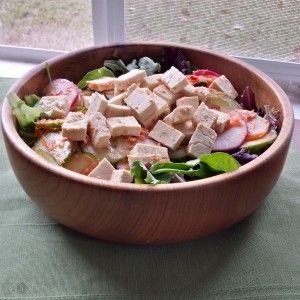 Lunch was what I’ll have to call a Hugh Jass salad, featuring a veggie I don’t love: radish. However, the Sesame-Miso Vinaigrette was incredibly flavorful, and once all the vegetables and tofu were combined the tastes blended quite well and I really enjoyed the radishes. I recommend the recipe for Spinach, Tofu, and Shaved Carrot Salad with Sesame Dressing and Spiced Pepita and Cashew Crunch, and the little spicy nuts and seeds are a great addition.
Lunch was what I’ll have to call a Hugh Jass salad, featuring a veggie I don’t love: radish. However, the Sesame-Miso Vinaigrette was incredibly flavorful, and once all the vegetables and tofu were combined the tastes blended quite well and I really enjoyed the radishes. I recommend the recipe for Spinach, Tofu, and Shaved Carrot Salad with Sesame Dressing and Spiced Pepita and Cashew Crunch, and the little spicy nuts and seeds are a great addition.
In working through the first day, this cleanse is not for the faint of heart, weak of kitchen skill, impatient, or otherwise easily frustrated in the kitchen. And if you’re unfamiliar with some of the ingredients, be prepared to do your own research, as the recipes don’t provide much information or guidance. Although, if you’re a food lover you probably are familiar with most of the ingredients.
Prepping dinner made me a little crazy. The Greenest Tahini Sauce recipe is unnecessarily complicated, I think. I understand blanching the garlic to give it a milder flavor, but blanching and shocking and draining and squeezing the relatively small amount of watercress (or in my case, arugula) and herbs is a bunch of steps in it that seem…excessive. Would it really be any less delicious if the greens and herbs were used fresh? Or maybe a quick steam in the microwave would work? It just took a lot of time and kitchen equipment to make about 1 cup of sauce.
The Red Quinoa with Walnuts and Shallots, however, was simple and delicious, even though I forgot to toast and add the walnuts (which would have been pecans in my case.
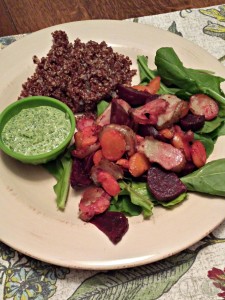 I’m least pleased with the Roasted Beets, Carrots, and Jerusalem Artichokes. I already had a bunch of roasted beets, so I skipped that part of the recipe. My carrots and Jerusalem artichokes took longer than 20 minutes to cook, and when they were finally tender they were more steamed than roasted. My oven is pretty much right on temperature, so I would raise the temp to 450 to get more roastiness on the vegetable if I make this again.
I’m least pleased with the Roasted Beets, Carrots, and Jerusalem Artichokes. I already had a bunch of roasted beets, so I skipped that part of the recipe. My carrots and Jerusalem artichokes took longer than 20 minutes to cook, and when they were finally tender they were more steamed than roasted. My oven is pretty much right on temperature, so I would raise the temp to 450 to get more roastiness on the vegetable if I make this again.
Overall we enjoyed the meal, and I’m sure the leftovers will make a nice salad tomorrow. So far I’m generally impressed with how flavorful the recipes are, despite some of the prep difficulties, and I’m looking forward to the upcoming meals.
